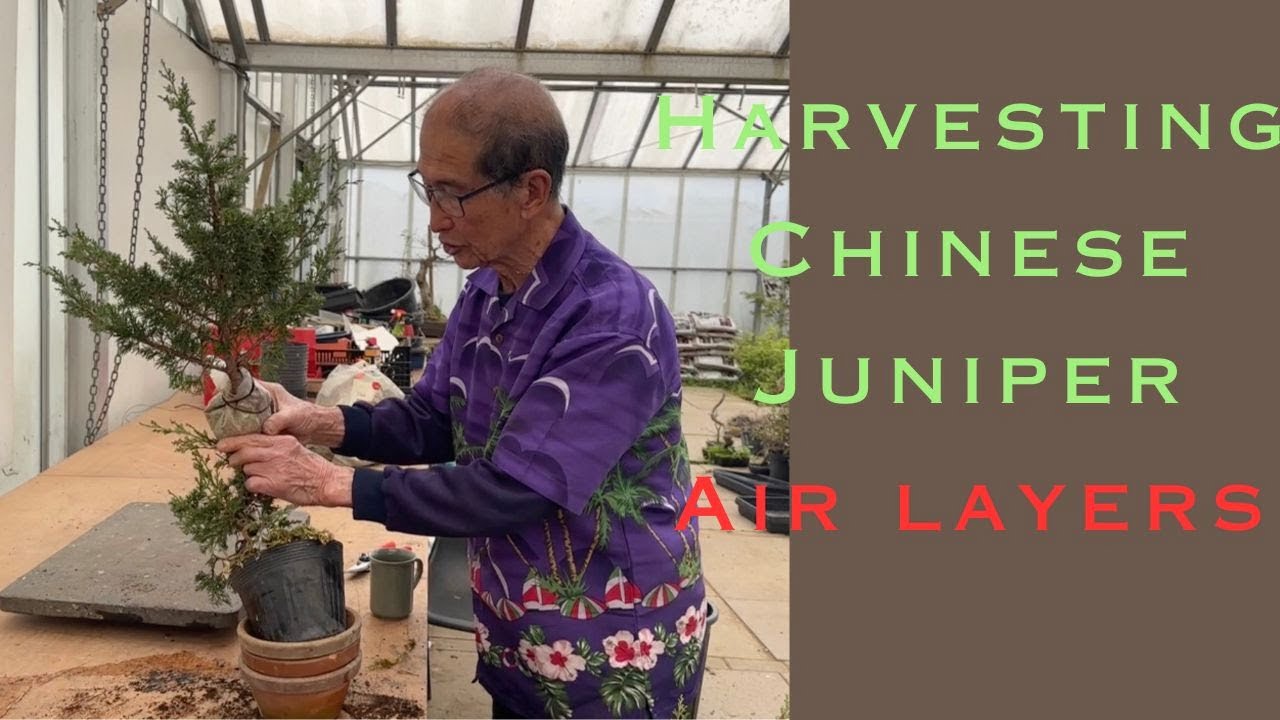If you’re looking to propagate your Chinese Juniper plants, airlayering can be an effective technique to create new individual trees without sacrificing the mother plant. In this step-by-step guide, we’ll walk you through the process of harvesting Chinese Juniper airlayers, including everything you need to know to ensure a successful outcome. Whether you’re a seasoned gardener or a beginner, follow along with our guide to create a thriving new juniper tree.
How to Harvest Chinese Juniper Airlayers: A Step-by-Step Guide
Introduction
Air layering is one of the most effective ways of propagating different types of trees. The process involves creating a wound on the parent tree, followed by applying a rooting hormone and covering the area with moist soil. When the roots have grown, the layer is cut and planted as an individual tree. This method is particularly useful for bonsai enthusiasts who want to create new trees from established specimens. In this article, we will provide a step-by-step guide on how to harvest Chinese Juniper airlayers for successful propagation.
Step 1: Preparation
As with any gardening activity, preparation is essential for successful air layering of trees. Here are the steps you should follow:
- Start by selecting a healthy branch that you want to air layer. Pick a branch with a thickness of about the size of a pencil, and locate a spot on the branch where you want to make the cut. The area should not be too close to the tip or the base of the branch.
- Clean and sterilize your cutting tools, including a sharp knife or pruning shears.
- Prepare the rooting hormone, which you can buy from your local garden center or online.
Step 2: Creating the Wound
Once you have gathered all the necessary items, follow these steps to create the wound:
- Cut a ring around the branch. Ensure that the diameter of the cut is at least an inch wide. Cut through the bark and phloem but only partially into the wood. The undercut should be smooth and narrow.
- After making the cut, strip the bark and expose the wound.
- Clean the cut area using a brush or a damp cloth.
- Apply rooting hormone to the exposed area.
Step 3: Applying the Moist Soil
Follow these steps to apply the moist soil:
- Prepare a mix of moist soil and a handful of sphagnum moss. Ensure that the soil is light and porous.
- Place the soil over the cut wound, ensuring that it covers the entire area. The soil should be moist but not soaking wet.
- Secure the soil with a clear plastic bag. You can use twist ties or rubber bands for this purpose. Make sure the bag is secure and airtight.
Step 4: Waiting for the Roots to Appear
After completing step three, observe and monitor the plant regularly for the formation of roots. The roots usually start to form within two to three months, depending on the climate and environment. During this time, the plant should be kept in a warm, humid location, away from direct sunlight.
Step 5: Harvesting the Airlayer
Once the roots have formed, it’s time to harvest the airlayer. Here are the steps you should follow:
- Cut the branch below the root ball using a sharp and sterilized tool.
- Transfer the airlayer to a pot containing well-draining soil.
- Place the newly harvested plant in a semi-shaded area. Avoid direct sunlight.
Conclusion
Air layering is a useful technique for propagating Chinese Junipers. It’s relatively easy to do, and with a little bit of patience and care, you can grow new trees from existing specimens. Remember to follow the steps discussed above for successful results.
FAQs
- How long does it take for root formation in a Chinese Juniper airlayer?
- The roots usually start to form within two to three months, depending on the climate and environment.
- Can I air layer more than one branch on the same parent tree?
- Yes, you can air layer multiple branches on the same parent tree.
- When is the best time to air layer a Chinese Juniper?
- The best time to air layer a Chinese Juniper is in late spring or early summer when the plant is actively growing.
- Can I use other types of soil instead of sphagnum moss?
- Yes, you can use different types of soil for air layering, but sphagnum moss has been proven to be effective.
- How do I know if the roots have formed, and it’s time to harvest the airlayer?
- You can observe the plastic bag for the formation of roots. When the roots are visible, it’s time to harvest the airlayer and pot it in well-draining soil.


